Attendees at UCD’s Charles Institute Seminar Series heard a presentation by Dr Graça Raposo of the Institute Curie
in France on the role of extracellular vesicles in regulating skin in health and disease
The Charles Institute, Ireland’s national dermatology research and education centre, hosts a range of guest speakers who cover a variety of topics ranging from skin cancer to psoriasis, among many others. The series, which is sponsored by RELIFE (part of the A.Menarini group), is designed to provide expert advice from a range of distinguished national and international experts in their respective fields and is chaired by Prof Desmond Tobin, Full Professor of Dermatological Science at UCD School of Medicine and Director of the Charles Institute of Dermatology.
The seminars are broadcast to attendees with a special interest in dermatology and cutaneous science in other locations, who access the talks remotely via an audio-visual link. The seminars are held using a hybrid model, combining in-person attendance with interactive online access.
Attendees heard a presentation by Dr Graça Raposo, Team Leader in the Department of Cell Biology and Cancer and Director of the Training Unit at the Institut Curie of Department Cell Biology in France, whose current research is focused on the functions of extracellular vesicles and their cargo as key players in extracellular communication.
Dr Raposo delivered a talk titled ‘Extracellular Vesicles: Integrators of Homeostasis, Lessons from Pigmentation’ and explained that extracellular vesicles (EVs) comprise a heterogeneous group of cell-derived membrane structures, which are collectively known as exosomes and microvesicles (also known as microparticles, ectosomes, oncosomes). Whether exosomes originate from the endosomal system and are secreted following the fusion of endosomes with the plasma membrane, Dr Raposo explained, microvesicles bud and are released from the plasma membrane.
EVs are present in biological fluids, and they are also involved in a number of physiological and pathological processes. They constitute a mechanism for intercellular communication, allowing cells to exchange proteins, lipids and genetic material, thereby having an influence on cellular functions, said Dr Raposo. Knowledge of the cellular processes that govern EV biology, she said, is essential to gain insight into the physiological and pathological function of these vesicles, as well as the clinical applications of their use and/or analysis.
‘Knowns and unknowns’
“We now know more about the origin, biogenesis, secretion, targeting and fate of these vesicles and how tomodu late their function in vivo,” said Dr Raposo. “However, there are still many unknowns. Our team initially focused on immune cells and more recently, pigment cells of the skin to get further insights into EV biology and functions. We show that EVs and their cargo are key players in intercellular communication in skin, regulating skin in health and disease.” Dr Raposo outlined the challenges and “knowns and unknowns” in this field of work and described the evolution of research, particularly with the use of electron microscope technology.
She described work along with her colleagues looking at how B-lymphocytes secrete antigen-presenting vesicles (J Exp Med, 1996), and told the attendees: “We put the vesicles in the presence of T-cells, and we showed that we could promote the proliferation of these T-cells. We proposed that these vesicles could be potential vehicles to stimulate anti-tumour responses. I think this was a great example of how to get from the bench to the bedside, because these vesicles are now used in the immunotherapy protocols as adjuvants to stimulate anti-tumoural immune responses in cases of melanoma, and in particular, in lung cancer.”
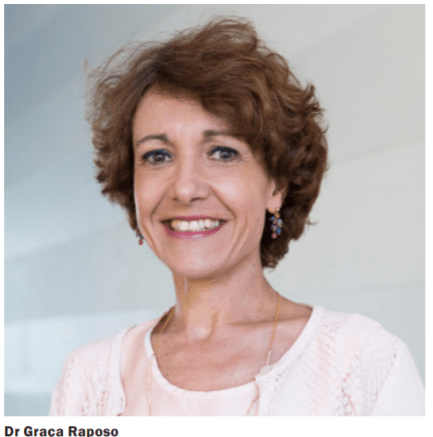
She described the overall growing interest in EVs and how the presence of genetic material in exosomes has boosted research in the field. “We went from the eradication of ‘obsolete’ molecules (reticulocyte differentiation), to T-cell stimulation and anti-tumoral immune responses, to clinical trails,” said Dr Raposo. “We have shown that many different EVs are secreted by many different cells. If you ask, ‘Do whole cells secrete vesicles?’, I would say that they do, but they secrete distinct types of vesicles at different levels.”
She also pointed out that there are many abundant sources of exosomes, including ascites, serum, pleural effusions, urine, CSF, and amniotic and seminal fluid. “There are also a lot of vesicles present in mothers’ milk,” said Dr Raposo, “and there are a lot of start-ups now that are using them as biomarkers of disease.” EVs are also being discovered in a huge range of areas, including biochemistry, cell biology, neurosciences, oncology, immunology, and a wide range of other research fields that will have practical translational benefits, she explained.
Dr Raposo also presented some prior collaborative research on breast cancer with regard to EVs, and told the seminar: “We showed that breast cancer cells release massive amounts of larger vesicles, but they also release far smaller vesicles that can be assimilated to endosome derived exosomes, so there were basically two populations of vesicles… in this study, we showed that it is actually the larger vesicles that carry the metalloproteases.”
However, one of the challenges in this field is to find the perfect isolation and purification methods, she added. Referencing some of her other work (J Cell Biol 2013), Dr Raposo also briefly discussed the origin and physiological relevance of EVs. “Cells release microvesicles, they release endosome-derived exosomes, and they release genetic materials. There are also proteins, and so these vesicles [from the secreting cells] are really targeted to the other [recipient] cells,” she said. “In some cells, there is clearly endocytosis. There are some papers proposing that the vesicles fuse, but there are also other examples where the vesicles stay docked… In the immune system, we have a lot of examples where the vesicles just stay on the surface and are not really processed,” she continued.
“But in cases where they are internalised, how the contents are then released to the recipient cell — we still don’t know exactly how the contents are delivered to the cell. This is one of the projects we will be carrying out in the lab.”
Secretion
Dr Raposo also explained that she has a particular interest in how these vesicles are generated. “If we know how these vesicles are generated, we can really shut-down the secretion.” She went on to discuss the diverse mechanisms involved in the generation and secretion of EVs and told the seminar: “Now we know it’s not only ESCRTs [endosomal sorting complex responsible for transport] that are involved… there was a paper which showed that you also need the production of ceramides for the release of the glycose from the lipids,” she said.
“We also know that tetraspanin-rich domains are also important. If you silence CD63, for example, in some cells like melanocytes, we really alter the secretion of melanosomal protexosomes. So as well as the non-ESCRT pathways, there are also ESCRT or ESCRT-like pathways — syntenin, together with Alix/Vps32, are important.”
Dr Raposo provided a brief overview of the proteins that are important in the docking and fusion process and the biogenesis of EVs, and said: “I think it [the process] is really driven by the cargo — the cargo recruits tetraspanins or ESCRTs or still other components, because if you have that cargo, you have one mechanism and then you enrich one type of vesicle. It’s similar at the plasma membrane, where you have other mechanisms, but some proteins’machineries are shared by both.”
Dr Raposo summarised by telling the seminar: “EVs have been found to be heterogeneous in size, composition and the mode of biogenesis, and this exosome biogenesis relies on different mechanisms. So you really need to know your cell systems and know the cargo you are looking at, because the cargo will recruit a particular machinery. “The same applies to microvesicles released from the plasma membrane. I think that we need to test and do the appropriate controls to explore the different protein machineries and lipid components already reported,” she continued, “and this is certainly linked to function.
I think model organisms such as zebrafish and Drosophila have helped us to gain additional knowledge of the biogenesis, secretion and fate and function of EVs.” Dr Raposo also gave a brief outline of her current work examining cell interactions and communication in the skin with regard to melanocytes and keratinocytes, as well as mechanical and signalling functions.
Melanoma
During an interactive Q&A session following the presentation, Prof Tobin commented on the heterogeneity of melanoma: “If a labile cell can divide and have two daughter cells, these daughter cells embark on a growth stage, so they enlarge to the parental size,” he said. “So there is the consequence of growth within a cell, and also the consequence of differentiation within the cell. Are the EVs that come from growth cells likely to be different from the same cell type if it embarks on a progression of differentiation — in other words, is there a different consequence for EVs that are differentiated?”
Dr Raposo replied: “I am sure that the secretomes would be different. I’m very interested in that, and one thing I would really like to do is to see whether the secretome is different in the keratinocyte differentiation process. We are now starting to study another type of large vesicles called MBsomes … we are working on cell division and looking at the phagocytosis, but also how the contents, of MBsomes, are delivered. We will be looking at the uptake of these large vesicles compared to microvesicles and exosomes to examine the process to see how these contents are delivered.”
RELIFE has had no input into the content of this article or series of seminars

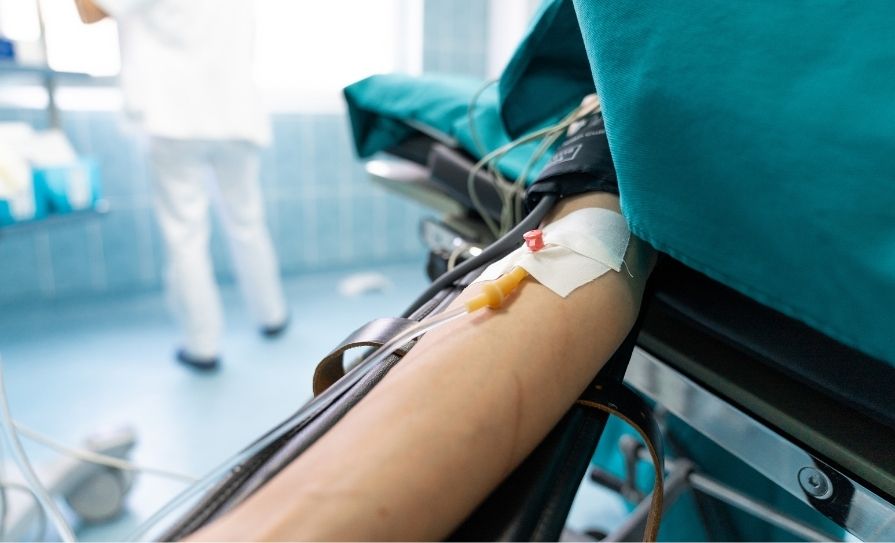
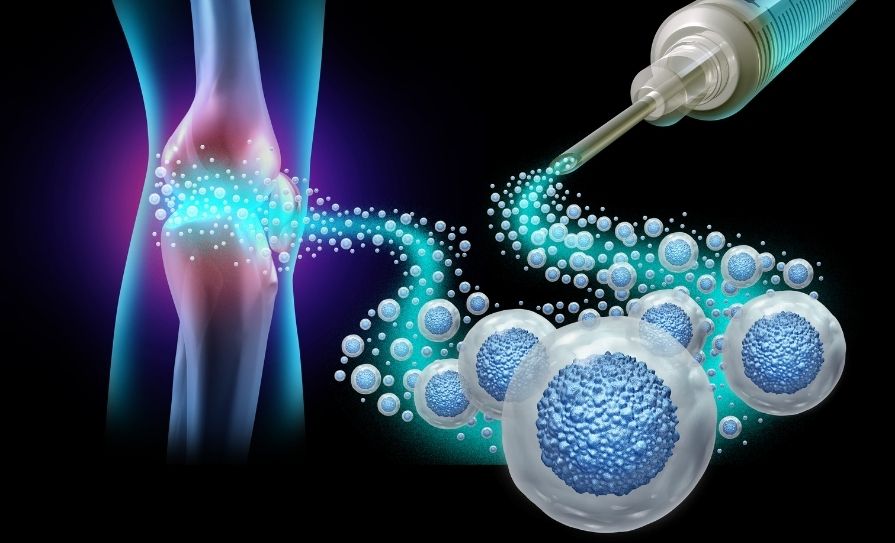
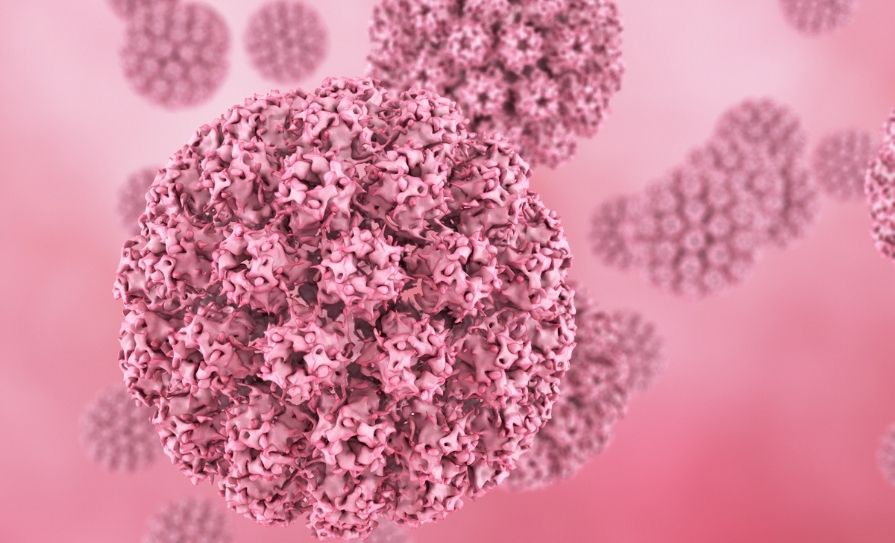


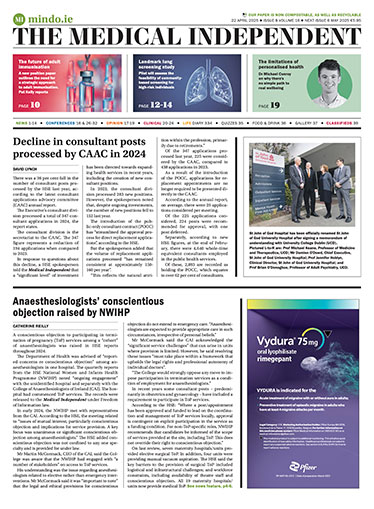






Leave a Reply
You must be logged in to post a comment.